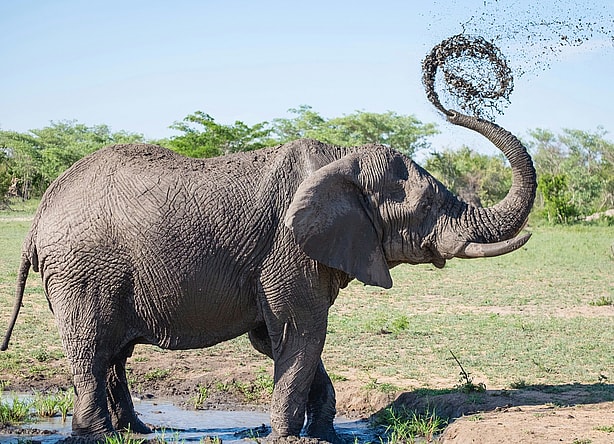
Elephants are considered magnificent animals because of more than simply their massive stature and elegant demeanor. In addition, these gentle giants have a staggering range of cognitive capacities that never cease to astound scientists and animal lovers who wonder: how smart is an elephant?
Elephants are among the most intelligent animals in the animal kingdom, based on everything from their social systems to their remarkable memory and problem-solving abilities. Let’s explore the amazing cognitive capacities displayed by elephants.
Elephants are incredibly intelligent animals. They have three times as many neurons as humans and the largest brain of any land animal. Elephants have repeatedly shown their remarkable mental capacities, even though many of these neurons are responsible for controlling their enormous and agile bodies. Here are some fascinating discoveries regarding elephant intellect.
Also Read: 6 Rare Houseplants Everyone Wants to Find
Elephants Can Identify Languages
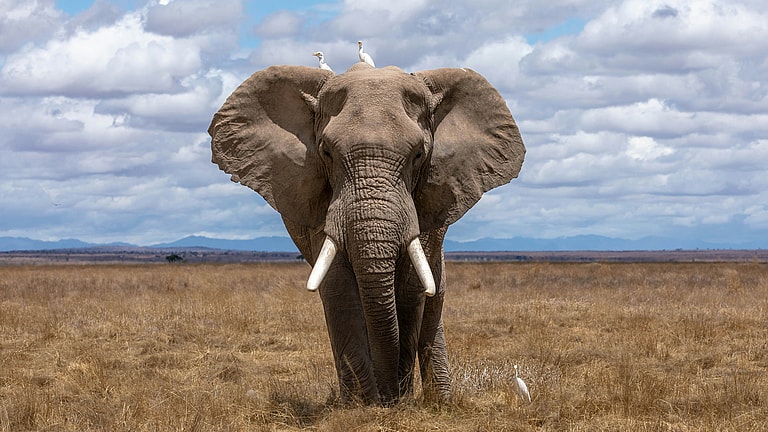
African elephants are able to discriminate human gender, age, and ethnicity only by listening to a person’s speech, according to research from the University of Sussex in Brighton, UK. The elephants go into protective mode if the voice belongs to someone who is more likely to be a threat.
Researchers located two Kenyan men—one from the Maasai ethnic group and the other from the Kamba ethnic group—to test this. Unlike the Kamba, the Maasai have a history of murdering wild elephants. In their various languages, the two men were recorded by the researchers stating, “Look, look over there, a group of elephants is coming.” The recordings were then played to groups of elephant families at Kenya’s Amboseli National Park.
The elephants exhibited signals of dread upon hearing the Maasai, huddled together and retreating from the voice. However, the elephants showed no response when a Kamba man said the same thing. Graeme Shannon, a visiting fellow in psychology at the University of Sussex and one of the study’s co-authors, said, “The ability to distinguish between Maasai and Kamba men delivering the same phrase in their own language suggests that elephants can discriminate between different languages.”
Furthermore, the elephants appeared unmoved by the identical recordings made by women and children from either tribe, indicating that they are capable of differentiating not only between ethnic groups but also between age and gender. This suggests that they recognize that men, particularly Maasai men, are the ones who are most likely to pose a threat.
Also Read: Did You Know These 10 Rare Dog Breeds?
Social Intelligence
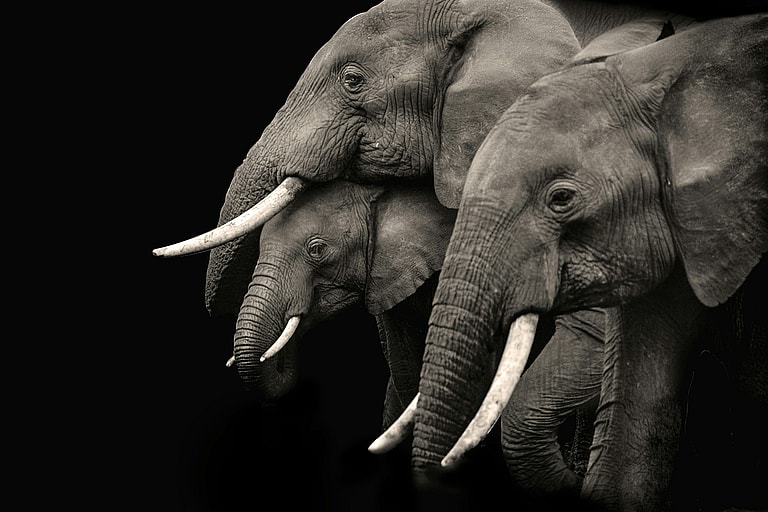
Researchers who work with wild elephant herds have long noted the remarkable camaraderie among family members. Tight-knit clans of related elephant moms and their offspring remain together throughout life, tending to each other’s offspring and creating protective spheres around calf populations that are in danger from lions or poachers.
Elephant clan members use a variety of vocalizations, including soft chirps, loud trumpets, low-frequency rumbles that are inaudible to humans, kicks, prods, and visual cues such as head tilts and ear flaps, to communicate with one another. They confer among themselves, decide as a group, and celebrate their successes.
One of the world’s leading authorities on elephants and co-founder of the nonprofit organization ElephantVoices, which advances the ethical treatment and study of elephants, Joyce Poole says, “Being a part of an elephant family is all about unity and working together for the greater good.” For example, as they are about to do a group charge, they all turn to face one another and ask, “Are we all together? Are we prepared to proceed? When they succeed, they throw a huge party, clacking their tusks together, raising their heads, trumpeting, and interweaving their trunks.
Elephant researcher Cynthia Moss, who also serves as the director of the Amboseli Trust for Elephants, had witnessed an incredible instance of elephant cooperation. She wondered, how smart is an elephant, really? One day, Ebony, a young and bold woman who was the daughter of Echo, a matriarch, jumped headlong into a clan that was not her own. That clan abducted Ebony and held her captive using their trunks and legs as a display of their superiority.
Echo, together with her oldest daughters, withdrew after being unable to get Ebony by themselves. After a little while, they came back carrying their entire extended family, stormed the kidnapping clan, and saved Ebony. That required planning, collaboration, and problem-solving, according to Moss. “How did Echo express her need for them? I don’t understand it, but it did happen.”
Read More: 5 Strangest Objects in the Universe
Family Ties
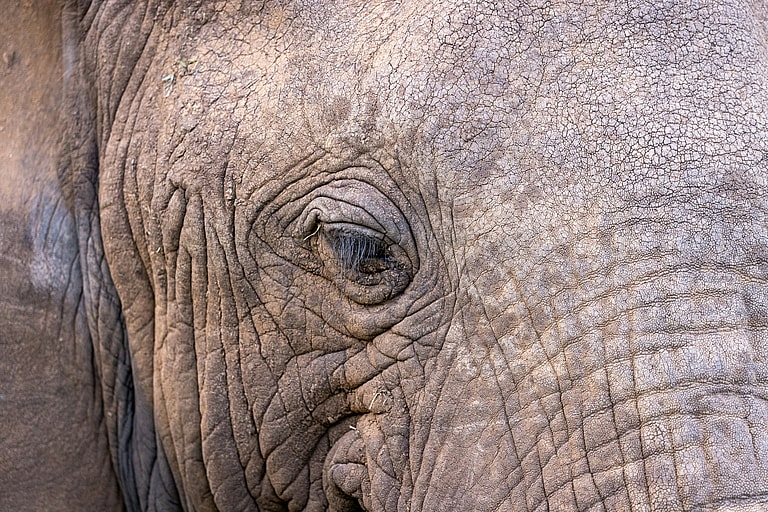
In addition to working for the purpose of survival, some scientists studying wild elephants have contended that the animals are also capable of true empathy. For instance, Poole remembers an elephant trembling as another extended her trunk in the direction of an electric fence—which, luckily, was not operational at the time but had once been alive.
Even in cases where the sick animal is not a close kin, elephants frequently refuse to leave the sick and injured behind. One day, Poole saw three juvenile male elephants struggling to bring a dying matriarch back to her feet by using their tusks to move her body. Another time, Poole witnessed a mother elephant give birth to a stillborn child while traveling through the Amboseli National Park in Kenya.
For two days, the mother cared for her dead calf, repeatedly attempting to bring its lifeless body back to life. When Poole pulled up to the distraught mother, he noticed that she had not eaten anything for the entire time and gave her a bottle of water. Within the vehicle, the elephant spread her trunk and enthusiastically drank till she was satisfied. When she was finished, she stayed with Poole for a short while, stroking her chest tenderly.
Elephants slow down, approach carefully, and caress the bones with their trunks and the bottoms of their sensitively padded feet when they come upon an elephant skeleton. Elephants are not as interested in the remains of other animals as other animals are. In one experiment, elephants probed an elephant’s skull for twice as long as they did a rhinoceros or buffalo’s, and they probed ivory for six times longer than they did a piece of wood. Elephants have been known to kick dirt over skeletons and cover them with palm fronds, according to Moss.
Also Read: 10 Most Expensive Foods in the World
Consolation Studies

Plotnik recently collaborated on a study on elephant empathy with Frans de Waal, a well-known authority on animal behavior at Emory University. They monitored 26 Asian elephants at the Elephant Nature Park in Thailand on a monthly basis between the springs of 2008 and 2009, searching for indications of what the researchers refer to as “consolation.”
Many animals are able to “reconcile,” or get along again after a fight. Fewer animals exhibit genuine consolation, which is when a witness goes above and beyond to console a fight victim or someone who is upset for any other reason. Plotnik and de Waal witnessed elephants comforting one another on numerous occasions.
Elephants that are upset frequently wag their tails and ears and let out trumpets, squeals, or roars. During the course of the study, a number of elephants exhibited this behavior due to fights, being startled by something (such a dog or helicopter), or for other reasons.
Other elephants saw these nervous behaviors and hurried to the distressed animal’s side, pecking at its head and massaging its genitalia while chirping quietly. Elephants occasionally place their trunks in each other’s mouths as a show of trust, even though doing so puts them at risk of being bitten.
Read More: These Are the 10 Most Rare Succulents
Self-Awareness

Self-awareness is the most difficult component of elephant intelligence to measure and the one that has presented scientists with the greatest hurdle in trying to think like elephants. Reversing earlier findings, scientists now have some indication that elephants are self-aware.
In order to ascertain whether an animal possesses a sense of self, scientists first apply a mark to its body that it can only recognize by looking at a mirror. They then watch to see if, upon seeing its reflection, the animal attempts to remove the mark. According to the logic, when an animal does this, it is recognizing when it is staring at itself rather than another animal.
Early research on elephant self-awareness involved setting up a one-by-two-meter mirror outside an enclosure’s bars, tilted such that the elephants could only see the top third of their bodies. The elephants raised their trunks in greeting, reacting to the reflection the same way they would to a fellow elephant. The elephants did not realize the marks on their faces were on their own bodies when the scientists doused them with white cream.
But what if the elephants were unable to recognize that they were staring at themselves in the mirror because of the experimental design itself? Elephants can only distinguish one another by touch, smell, and sound—not by sight—and the study’s subjects were unable to physically examine the mirror. Thus, Reiss, de Waal, and Plotnik made the decision to repeat these tests while giving the elephants full sensory access this time.
Also Read: 10 Longest Roads in the World
The Mirror Test
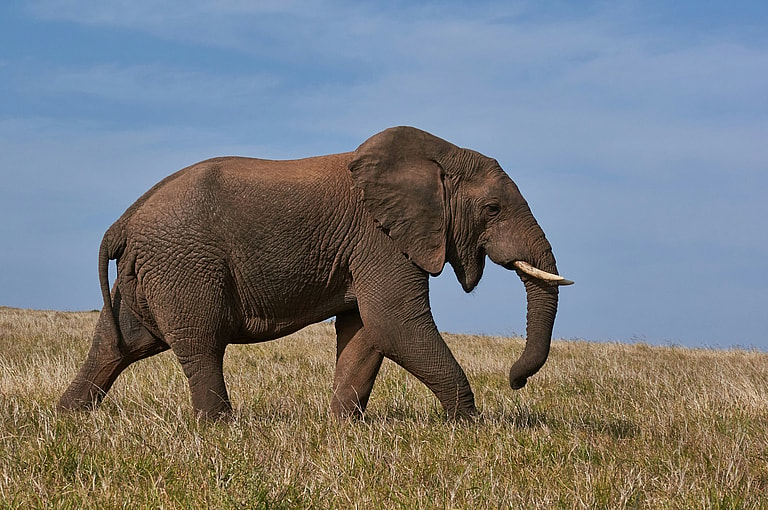
The three built a 2.5 by 2.5-meter mirror in 2005 and fastened it to a wall encircling the Bronx Zoo’s elephant exhibit. Three Asian female elephants were at liberty to come near and examine the mirror at their own pace. Maxine and Patty approached the device with a swivel of their trunks, as if they were trying to climb the wall that held it, to see whether there was another elephant concealed behind the glass.
All three elephants swayed their trunks, staring into the mirror, like we may wave our hands to check if a shadow is ours, when they saw nothing. Gazing at their reflection, they inserted their trunks into their mouths as if they were looking for snagged spinach, implying an answer to the burning question: how smart is an elephant?
The right side of each elephant’s face was given a white X by the scientists a few days later. Happy walked past the mirror a few times before she started to touch the X on her face with her trunk; Maxine and Patty did not appear to notice the marks. She eventually turned to face her reflection and kept swiping the tip of her trunk at the painted portion of her face.
It may seem like a poor performance because only one elephant out of three saw the X on its face, but it is actually rather amazing. Reiss notes that less than half of chimpanzees in studies pass the mirror test, despite the fact that researchers acknowledge that these animals are self-aware.
According to Plotnik, it may not have been the greatest idea to test elephants’ self-awareness in the first place by expecting them to notice a random stain on their face. Elephants keep themselves clean by getting dirty and frequently dousing themselves in dust and dirt to ward off insects and parasites, in contrast to chimpanzees who are meticulous groomers who spend hours picking nits and gnats out of each other’s hair. They also enjoy galloping through mud. Elephants don’t seem to have the same level of conceit, according to Plotnik.
Also Read: What Is the Rarest Animal in the World?
How Smart is an Elephant in Captivity?

The argument over whether or not to keep elephants in captivity has heated up in light of all the fresh evidence of their intelligence. Dan Koehl, a former elephant caretaker, has a comprehensive global database on elephants. According to his data, there are currently 7,828 elephants in captivity: 1,654 of them are kept in zoos or safari parks; 4,549 are kept in “elephant camps,” where visitors can ride the animals; 288 are kept in circuses; and the remaining ones are kept in temples, sanctuaries, or private homes.
The most recent data regarding the welfare of elephants housed in American zoos is not very promising. Animal welfare specialist and Vistalogic, Inc. consultant Cheryl Meehan just finished a fascinating study on almost all of the roughly 300 elephants in North American zoos accredited by the Association of Zoos and Aquariums (AZA), working with numerous collaborators to discover the answer to the adage: how smart is an elephant?
Using a combination of photos, videos, blood and hormone tests, veterinary reports, and caregiver-filled surveys, the researchers evaluated the physical and mental health of captive elephants. Approximately 75% of the elephants were overweight or obese; 25–40% had foot or joint issues of some kind; and 80% showed behavioral tics, such as pacing and constant head bobbing or swaying.
Read More: 8 Rare Sea Glass You’d Be Lucky to Find
Cognition and Captivity

In the late 2000s, researchers led by Stephen Harris of the University of Bristol studied elephants kept in UK zoos in a manner akin to this. I questioned him about whether an elephant could be kept in a zoo in a state of good physical and mental health.
His response was brief: “No.” The elephants under study were mostly indoor animals, spending up to 83 percent of their time in small spaces; most had aberrant gaits; 75 percent were overweight; over 50 percent exhibited behavioral tics; and one of them had tics for up to 14 hours in a single day. Elephants kept in captivity die younger on average and experience higher rates of infertility than their wild counterparts.
Zoo elephants spend too many hours standing motionless on concrete and eat high-calorie foods that they would hardly ever come across in their natural habitat. In contrast, wild elephants travel great distances through the forest or savanna in search of food and water, often consuming enormous amounts of fibrous, tough grasses and shrubs that are difficult to digest. Additionally, because they dislike lying down to sleep on stones or other hard surfaces, many zoo elephants do not obtain the necessary amount of sleep, according to research.
Seldom do zoos accurately replicate the intricate social structure of wild elephants. In captivity, female elephants are frequently strangers that are brought in from time to time. When a zoo decides to move an animal, any friendships that may have formed can cease in an instant. According to Moss, “People sometimes treat these creatures like furniture.”
It was once believed by researchers that male elephants were loners since they left their clans as young adults. But as they now know, male elephants engage in intense social interactions with one another. However, zoos mix males and females in ways that would never happen in the wild and attempt to get rid of mature males that get too lusty or irrational.
With the increasing amount of anecdotal evidence of elephant intelligence and emotional life, the zoological world is under increased pressure to respond to a difficult question: Why do elephants remain in captivity at all? Zoos typically cite two main goals: first, to save elephants from dangerous circumstances (e.g., poaching threats or the stress of living in so-called rehabilitation centers in Asia where the animals are chained to trees); and second, to raise public awareness of elephants’ remarkable qualities in the hopes of encouraging their conservation.
Also Read: 12 Expensive and Rare Teas of the World
Defending Elephants
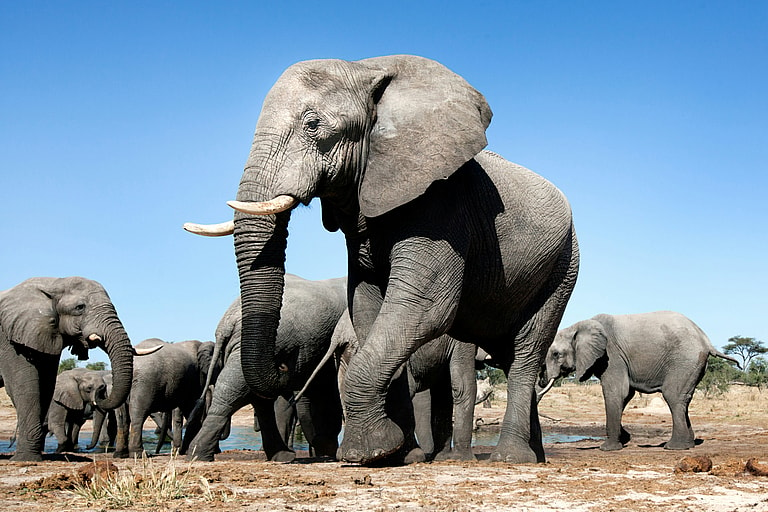
Over time, these arguments have grown shakier and shakier. These days, very few elephants in zoos are saved from a miserable existence; most were born into captivity. Zoos started a very aggressive captive elephant breeding campaign in the middle of the 2000s in an attempt to make up for all the elephants they had lost to illness and old age. “In a zoo, for every elephant born, two more die on average,” The Seattle Times found in its in-depth investigative study from 2012.
In terms of educational outreach, zoos are no longer relevant due to current technology. Harris claims, “We didn’t have television when I was a child, and even when we did, there weren’t many pictures of wildlife.” There was no other way to develop a feel for elephants than to go to the zoo and engage with them by touching and riding.
Naturally, there is an abundance of information nowadays. Through photos and videos, you can see amazing behaviors and gain a sense of size that you would never see in confinement. Think about how much more may be learned from watching beautiful footage of wild elephants in a nature program on par with Planet Earth than from staring at a bobble-headed, arthritic zoo elephant.
Some scientists believe that calling for an immediate end to elephant captivity is foolish and idealistic, especially outside North America and Europe, even if there aren’t many valid reasons to keep elephants in zoos in the first place.
Plotnik states, “Although I think all elephants should be wild, that is unfortunately not realistic.” Elephants have been used as beasts of burden for generations in Asia, where he works, and hundreds of the animals are being kept in captivity in camps. It is just not possible to release all those creatures all at once; there might not even be enough wild habitat remaining to support them all.
According to Plotnik, the ideal course of action is to save the wild Asian elephant population while gradually eliminating the captive population by providing elephant caregivers with new, equally rewarding occupations. Similar goals for elephants housed in American and European zoos are expressed by Moss, who says, “I would like to see them live out their lives and have no more breeding or importation.” Meehan hopes that the data she has gathered will contribute to the betterment of the welfare of elephants kept in zoos.
Read More: 10 Rarest Albino Animals From Around The World
Rethinking Captivity: How Smart is an Elephant in the Wild?

At least a few zoos have been attempting to transform their elephant enclosures into more of sanctuaries in recent years by utilizing animal welfare science. The Portland, Oregon Zoo is about to renovate its elephant habitat, claiming that this will enhance the quality of life for its four male and four female Asian elephants. Elephant Lands, a hilly 2.5-hectare habitat with a 490,000-liter pool for playing, lounging, and bathing, is scheduled to debut in 2015.
The habitat is primarily covered in thick sand rather than concrete. Elephant curator Bob Lee says that because the animals will be allowed to roam freely, it should be possible for men and females to communicate as they see fit. Elephants are fed by a variety of feeding equipment at irregular times since research has connected such unpredictability to healthier body weights. Other feeders will use mechanical riddles and out-of-reach delicacies to challenge the elephants’ minds and trunks.
Updating elephant cages to provide additional space and intellectual stimulation is akin to both acknowledging and discounting the body of knowledge on the well-being and intelligence of elephants. After all, the zoos would close their elephant exhibits if they truly cared about the welfare of the animals.
The Detroit Zoo was the first to surrender its elephants purely for moral reasons in 2005. Their two Asian elephants became physically and mentally unwell from living in such close quarters and being indoors during the severe Michigan winters. Wanda and Winky were relocated to the 930-hectare sanctuary of the Performing Animal Welfare Society (PAWS) located in San Andreas, California. Only a small number of zoos have made the same transition, though.
Even his enormous shelter, in the opinion of Ed Stewart, president and co-founder of PAWS, is insufficient to maintain the elephants’ health at the level that they would in the wild. “Elephants should not be in captivity— period,” he states. “Whether it’s a sanctuary, a circus, or a zoo doesn’t matter. Not only is the social structure incorrect, but the location, temperature, and cuisine are also incorrect. Never can you measure up to the wild. They have incredible intelligence. It’s amazing they can survive at all given their mental faculties and the limitations of their confinement. I hope that in 20 years we will say to ourselves, ‘Can you believe we ever kept those animals in cages?'”


